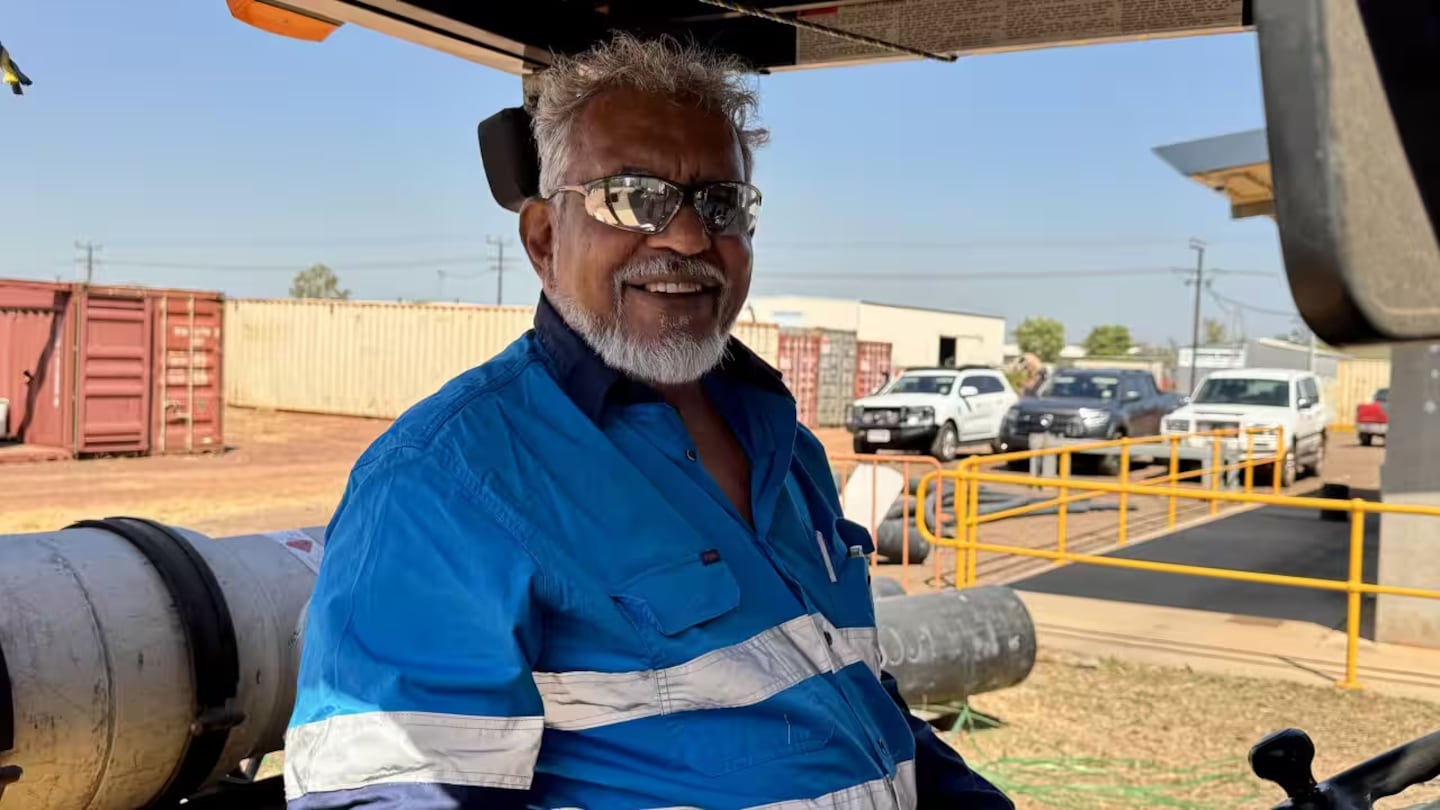This article was first published on NITV.
Luritja man Bobby Cole has worked in the mining industry for the last 23 years.
He has seen firsthand the impact the industry leaves on Country.
“The mines are left behind all open and contaminated,” Mr Cole told NITV.
He is now a majority owner and managing director of New Life Waste Recycling, a company based in the rural area of Humpty Doo, 40 kilometers southeast of Darwin in the Northern Territory.
“What we want to do is be part of the solution,” Mr Cole said.
The team at New Life Waste Recycling engage with Traditional Owners and mining companies to remove High-Density Polyethylene (HDPE) pipes — also known as poly plastic — and process them into material that is used to create other products.
The material is brought to their Darwin-based warehouse where it’s shredded and refined to pellets that can be melted into new products.
“It is [about] working with communities, about building a bridge, building partnerships with the mining companies and Traditional Owners,” Mr Cole said.

The company is currently working with the Mirarr people, Traditional Custodians of the Country that encapsulates the now closed Ranger Uranium Mine, 230 kilometres east of Darwin.
Ranger Mine was Australia’s longest continually operating uranium mine until it ceased operations in 2021.
It’s located on the cusp of the world heritage listed Kakadu National Park.
New Life Waste Recycling Managing Director Patrick Higgins told NITV the original plan was to bury the poly pipes once the mine closed down.
“When the mine started up 50 odd years ago the program was to bury everything when they started the uranium mining,” Mr Higgins said.
But with the new technology, the team are now able to process two tonnes of end-of-life HDPE materials an hour.
Every kilo of recycled High Density Poly Ethylene (HDPE) material saves the equivalent of 1.68 kilos of carbon dioxide from the atmosphere when compared to the manufacturing of new HDPE.
“If it was left on site the HDPE would become a microplastic and end up in Kakadu National Park and then that’d eventually end up in the Timor sea,” Mr Higgins said.
Caring for Country
Mr Higgins said an important part of the work is giving autonomy back to Traditional Owners while holding mining companies accountable for rehabilitating Country after closure.
“It’s not just about us and our generation, it’s future generations all our children are going to be dealing with these microplastics,” Mr Higgins said.
“We need to look after our planet.”
Maikulan and Kalkadoon man Carl Howard works to engage Traditional Owners of Country where mine sites are located.

He told NITV the new technology has been welcomed.
“The Mirarr people in particular, they were really happy to hear that new life waste recycling has this new technology to take out the pipes,” Mr Howard said.
Legacy mines are derelict or abandoned mines whose rehabilitation strategies or management are typically implemented by the government.
Mr Howard hopes this new way of processing the poly pipes can be used to garner similar results on the estimated two thousand legacy mines across the north of Australia.
“The concept that new life waste recycling has, has the capacity and capability to reach right across northern Australia,” Mr Howard said.
By Emma Kellaway of NITV.



